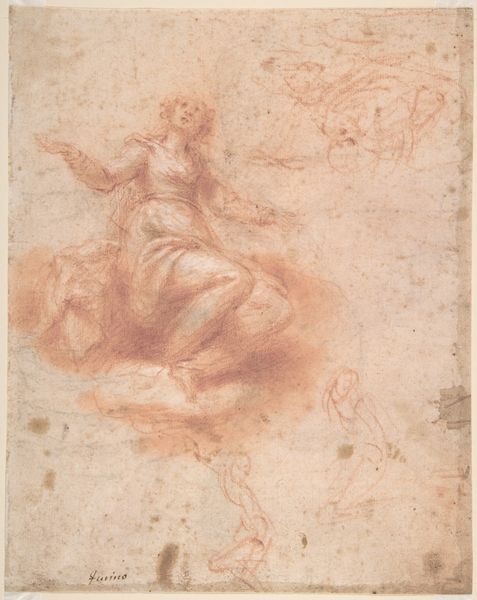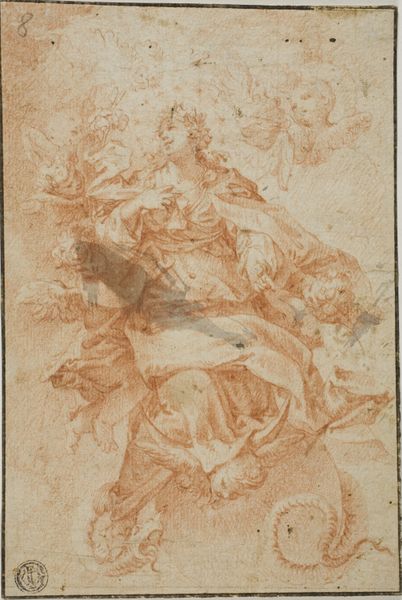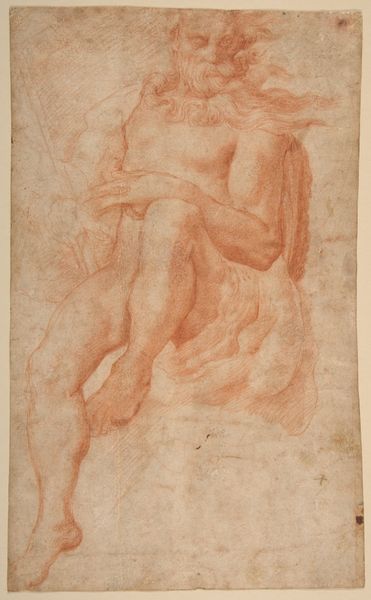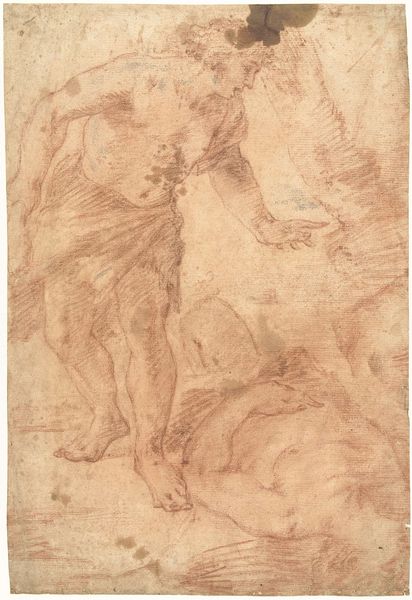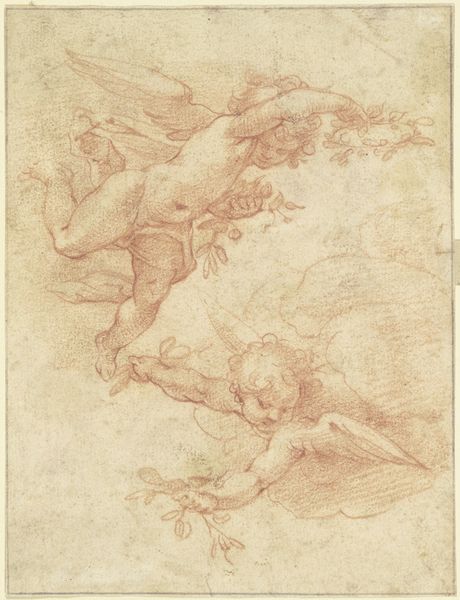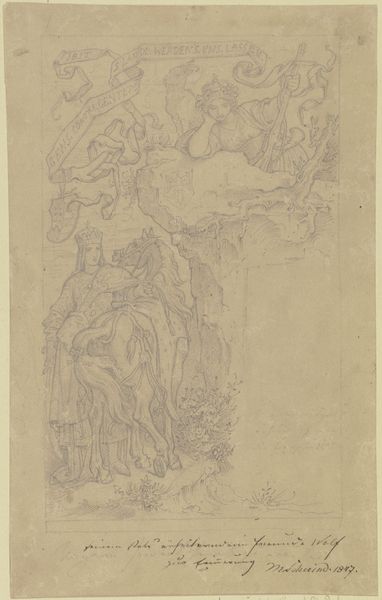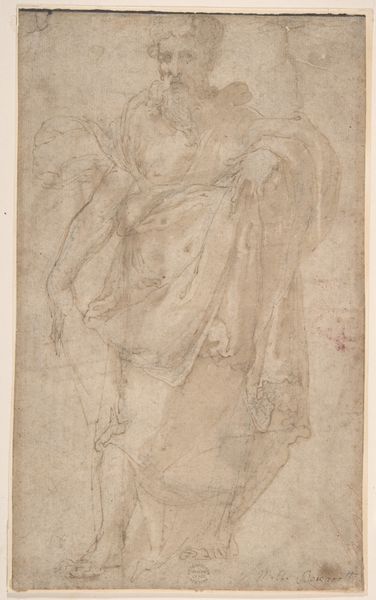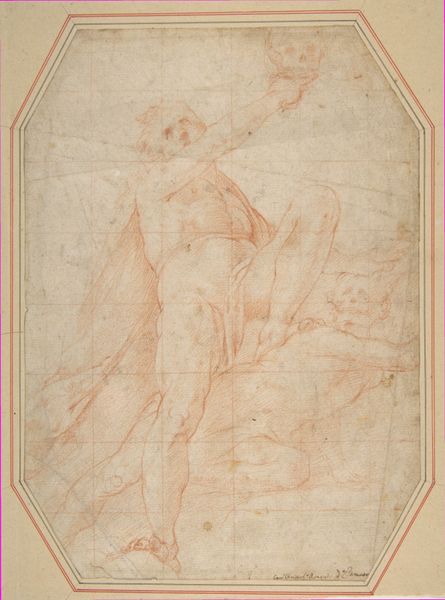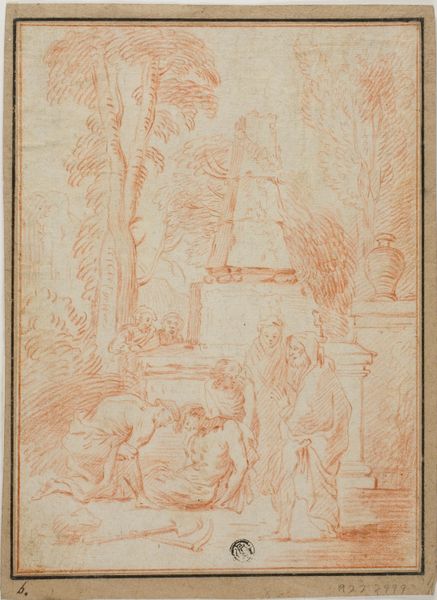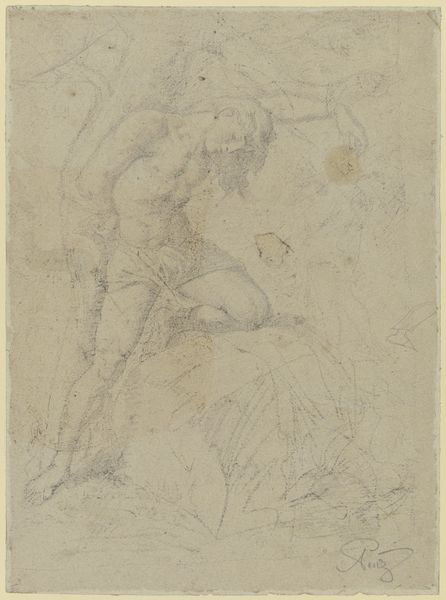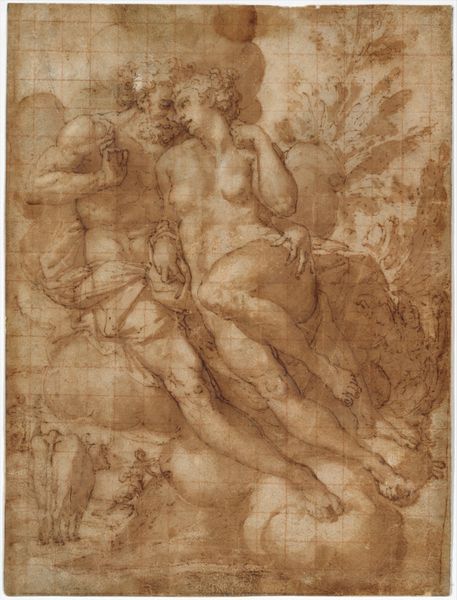
Figural Studies for a Scene (The Birth of the Virgin or Saint John the Baptist?) 1515 - 1535
0:00
0:00
drawing, paper
#
drawing
#
narrative-art
#
figuration
#
paper
#
history-painting
#
academic-art
#
italian-renaissance
Dimensions: 8 11/16 x 6in. (22.1 x 15.2cm)
Copyright: Public Domain
Curator: So, what strikes you when you look at this? For me, the scene is almost dreamlike—a cascade of figures rendered in a sanguine red chalk that gives the whole thing a feeling of warmth, like dawn breaking. Editor: Immediately, I notice how it points to the social history of its creation. The somewhat ambiguous attribution and subject—the Met suggests either the Birth of the Virgin or Saint John the Baptist—invites considering the role of religious art in shaping social identities of Renaissance Europe. It reflects the institutional forces around faith during this era, the relationship between the spiritual and political. Curator: Yes, well, ambiguity seems to be the key here. We’re looking at a drawing, “Figural Studies for a Scene,” believed to be by Rosso Fiorentino, dating from 1515 to 1535. It's really more about the raw energy, the exploration of form. He’s capturing a moment before it solidifies into dogma. Isn’t that kind of delicious? Editor: It's intriguing. But what interests me more are the power dynamics at play here, with this religious artwork serving as a historical record of normalized social values and their impact on marginalized communities. What did devotion mean in a time of extreme social hierarchies, where piety could be a tool for social control? Curator: True. However, focusing on just one perspective can, in a way, limit its scope. Looking at this from purely aesthetic vantage, I am taken by the fluidity of the line and the overall movement that hints at Florentino’s exploration of Mannerism. I feel like I’m watching the dance of imagination, as this artist explores figures on paper as part of the larger creative process. It transcends history, almost. Editor: But can we separate art from its historical circumstance? Isn’t our contemporary moment, in all its complexities, always shaping how we view the past and challenging the canon that has systematically excluded voices? By addressing these issues head-on, we promote a more inclusive understanding of the art world. Curator: Aah, you're reminding us that we are never fully detached observers. I find that's the fun of looking at art—every view can reflect the observer as much as it does the thing being viewed. Editor: Precisely. By weaving these historical, social, and theoretical considerations, we can make a richer experience of this work and challenge the very systems that determine whose stories get told, seen, and heard.
Comments
No comments
Be the first to comment and join the conversation on the ultimate creative platform.

